by Sarah Walters, Alvecote Wood
Click here to read more articles by Sarah on SoW. Visit Sarah’s blog – docsquid.blogspot.co.ukSarah having felled a tree using a split-level felling cut for a backward-leaning tree. Photo credit Phil Dunford
When we first got chainsaws a few years ago, we had some informal training from one of our tree surgeons, who is also an instructor at the local Agricultural college. And we have had that updated ever since, when they visit the woods. I have always been less comfortable with the chainsaw than Stephen, and so limited myself to snedding and cross-cutting, and had very little experience in tree-felling or maintenance – indeed, I don’t even know where Stephen has hidden the tools for my saw! We now have the opportunity to help out on other sites, including Wildlife Trust and another privately-owned local woodland, so needed to get some formal training and a proper certificate.
Phil Dunford is based in North Wales, near Corwen. Phil has twice won the British Chainsaw Championship and seven times the Welsh Treefelling Championship – so he is good!
We opted for different courses. Chainsaw courses have recently been overhauled, and the old CS30/31 course is now a Lantra QCF course (COURSE CODE 2564) covering maintenance, cross-cutting and felling trees up to 380mm, and comes with a licence to practice professionally. However, this is quite a demanding course, with an assessment on a sixth day, for which you pay separately. There is a new course for “occasional users” which would suit most small woodland owners as few of us work full time in forestry. This is called the Lantra ITA course (CLMC41X) which covers maintenance and cross-cutting and felling up to 20cm diameter – absolutely ideal for coppicing, firewood cutting and small woodland management tasks. This course is four days long – basically it is the first four days of the QCF course, with a certificate of training issued at the end of it. I opted for the latter, with an option to move onto the QCF course if I was doing well, while Stephen wanted to do the QCF course from the start, as it is a gateway into higher qualifications including climbing, which he also wants to do.
Filing a chain with a Husqvarna roller guide
The first day was spent in the workshop. Stephen used to do all the maintenance for both of us, so it was fun for me to do something more than just fuel the saw, check the tension and hand it over to Stephen to fix if something was wrong. We covered both the cutting elements and drive elements of the chainsaw, and I enjoyed sharpening, checking, filing, removing the clutch, replacing the starter cord and everything. All useful stuff. Phil is a great tutor, and has lots of brilliant examples of badly-maintained saws, chains, bars, sprockets and starter cords to demonstrate what can go wrong if you don’t do maintenance properly.
The course moved up a gear considerably after the first day, when we headed out into the forest. This was a real shock. I had not expected to be felling sitka spruce on a Forestry Commission plantation. Now, some of these trees may have a small diameter, but they are massive – up to 60 foot tall – and so very heavy. If you think you will be felling little bits of coppice, this is a bit of an eye-opener. The terrain is also very difficult – many generations of mossy, wet stumps, brash and wet logs to climb over to get to your felling area and to sned up and cross-cut these large conifers. Plus you have to cut the timber into proper lengths as this is commercial forestry, and the produce needs to be marketable when you have finished with it.
The first part of the first day in the woods was spent cross-cutting and learning basic felling cuts on logs he had set up for this purpose – a great way to practice without all the hassle of getting your aim wrong and hanging-up a large tree! I had not expected to be learning plunge or bore cuts with both pulling and pushing chain on the first day in the woods – scary stuff. Pretty soon it was apparent my saw was not up to it, so Phil quickly produced another saw for me. Phil is a great tutor, and even tasks of which I was scared became doable with his gentle encouragement.
Phil giving fedback to Stephen on his snedding technique
Another eye-opener was the range of felling cuts available to you for both small and large trees – we knew some, but this course introduced more. Any illusions I had about being able to complete the QCF course were quickly brushed aside when it became obvious that I was simply not big enough to lever over a hung-up tree (something you have to do for assessment), nor to shift and stack 8ft logs on my own (also for the assessment). But Phil was kind enough to let me do all the training for the QCF course including felling larger trees – I just couldn’t do the assessment on that site and with those tall trees.
Stephen snedding a felled larch
Phil took us through all the felling cuts on log blocks before we headed off to try them out for real, and also had a great training set-up to teach snedding techniques for conifers (although nothing to teach this on broadleaves, which differ a lot). Nevertheless, all the exercises served to increase confidence and precision with the saw. We didn’t just work in the sitka plantation, but also went up to a larch plantation on a different site to experience felling on a steep slope with trees leaning forwards and backwards. Phil explained that all the training was on conifers because when he has run courses with broadleaves they spend all day winching down hung-up trees and not much time actually learning felling and snedding.
Stephen making a split-level felling cut – these are big, tall trees!
By the end of the four-day course I was exhausted, so Phil set up a load of blocks for me to practice felling without having to do all the snedding, cross-cutting and log-stacking. He also set up a stand so I could have a go at chainsaw carving – and taught me how to do a stool, chair and mushroom. My first attempts were not too bad, and this is definitely something I will do more of. Phil demonstrated to us how he carves owls – now that is truly amazing, and something I’d like to have a go at now I’m back home.
My first efforts at chainsaw carving – slightly wonky, but improving each time
Phil was extremely good and inclusive, allowing me to attend Stephen’s assessment and take photos. The assessment was straightforward provided you had listened, learned, practised and did things according to the book. We departed, exhausted and happy, with our respective chainsaw qualifications, a new respect for forestry workers and our chainsaws, with greatly expanded knowledge and experience.
Phil really is a gifted tutor – he explains things well, talks you through things, can deal with you being anything from too scared to too confident, and has a gift for making the day enjoyable, whatever the weather and whatever the task.
The chainsaw training group on our first day in the woods – from left – Chris, Sarah, Stephen, Pete and Mike (who was doing maintenance and cross-cutting). Photo credit Phil Dunford
It really is important to get some training before setting yourself loose with a chainsaw. A formal course won’t suit everybody, but you do need to remember that if you don’t have a formal certificate, you can’t pop over to your mates’ house or woodland to help out with a chainsaw. We found both formal and informal training to be valuable, and learning from a real expert and chainsaw champion is a great way to find out just how much you don’t know.
I would say that the physical demands of this course are very high. As well as being tiny (5ft 2 and 7 ½ stone), I have a chronic lung problem, and this made the course very difficult for me. Another student was struggling as he was not very fit, albeit much larger than me. You need to be either big and strong, or very fit, or preferably both, to cope with the QCF course – a benchmark is that you need to be able to work at about 80% maximum aerobic capacity for several hours at a time, and also to dead-lift about 50kg repeatedly during the day. The QCF course is great, but the ITA course is enough for most small woodland owners unless you want to fell large trees. For coppicing, the ITA course is perfect, but some public bodies, including the Forestry Commission and some Councils will not accept it, and require the QCF certificate instead. But for most purposes, the ITA certificate is fine.
Whatever you choose, Phil Dunford is a really good tutor – a week in Wales in his company is pleasant and informative, and his experience and skills are legendary. You could not pick a better place to go, nor a better person to learn from.




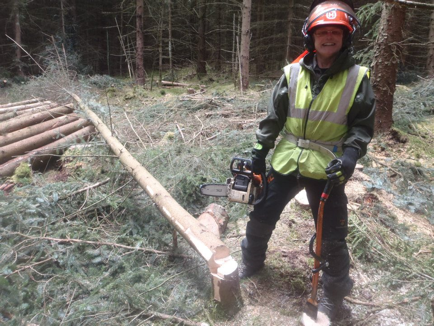
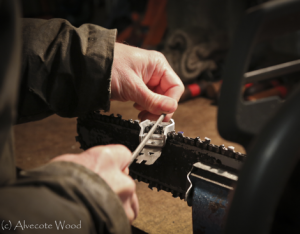
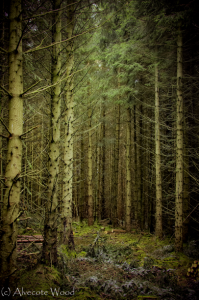
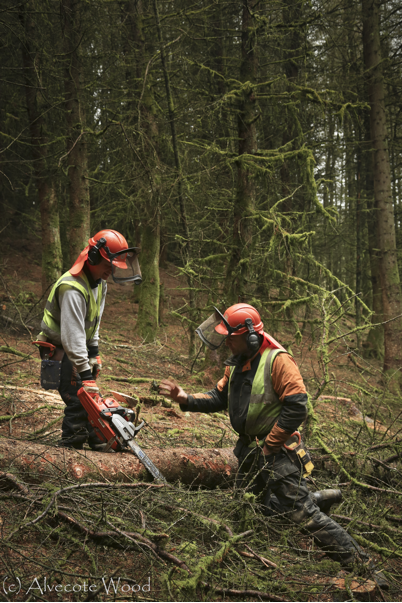
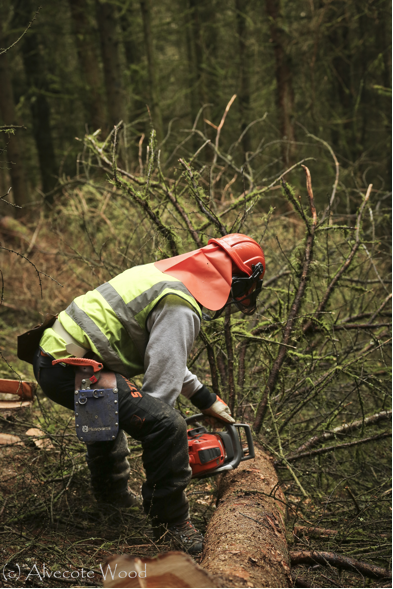
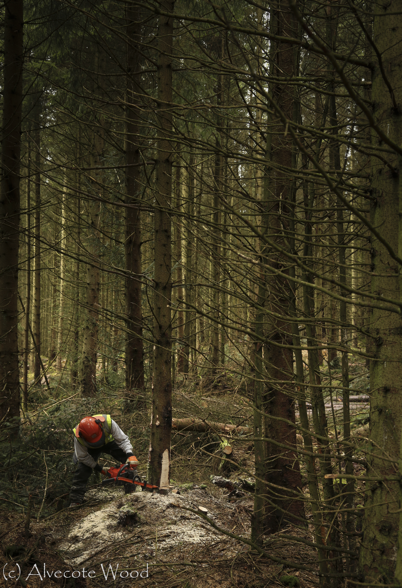
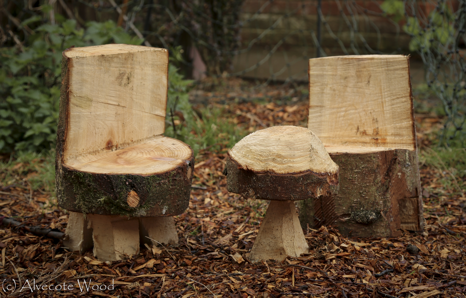
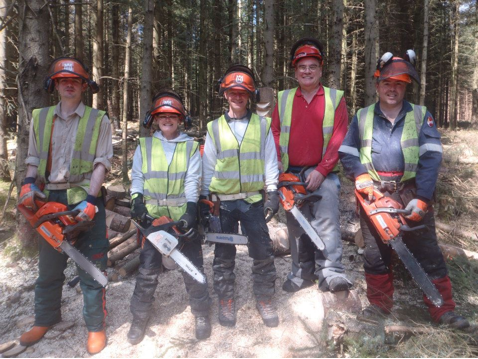























Great piece on the course, we are based up in the lakes and I wish the weather was like yours when I got my tickets!! Thought I’d drop a line to say have a look at our new chainsaw saw horse. It saves your back and also makes the log creation safer faset and easier!